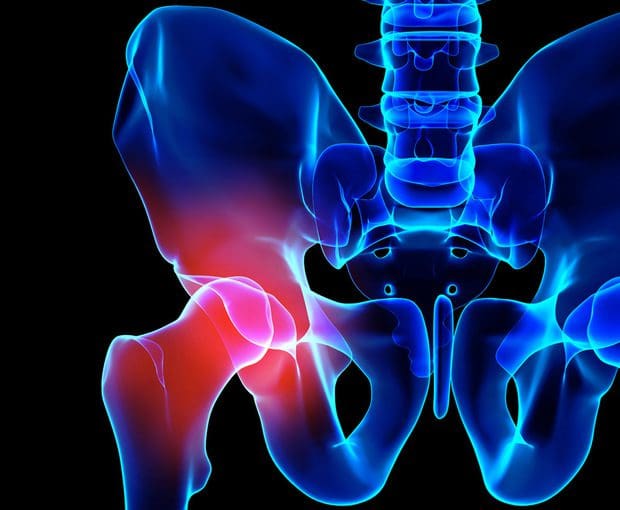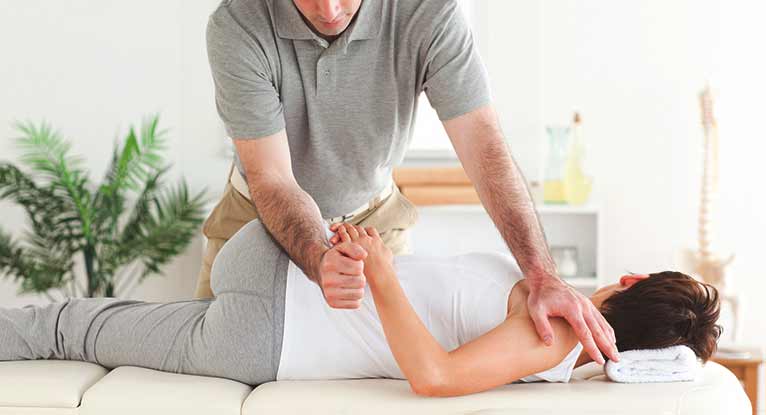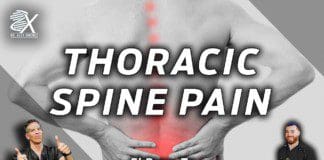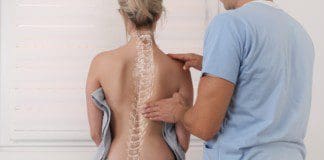Table of Contents
Introduction
The lower half helps stabilize the body and provides movement from the legs and rotation in the hips. The lower abdominal organs help control bowel movement while the muscles allow movement by regulating internal abdominal pressure. Combined with the back muscles, the lower abdomen can keep the body stable while protecting the lumbar section of the spine. When external factors begin to affect the lower back or disrupt the lower abdominal organs, it can trigger different symptoms that correspond to other sections of the body, like knee or leg pain being associated with menstrual cramping in the lower abdominals or even having pelvic pain that is an associated mediator to having constipation. Today’s article looks at pelvic pain, how it affects the lower abdominals, and ways to treat pelvic dysfunction in the body. We refer patients to certified, skilled providers specializing in chiropractic treatments that help those suffering from pelvic pain. We also guide our patients by referring to our associated medical providers based on their examination when it’s appropriate. We find that education is critical for asking insightful questions to our providers. Dr. Alex Jimenez DC provides this information as an educational service only. Disclaimer
Can my insurance cover it? Yes, it may. If you are uncertain, here is the link to all the insurance providers we cover. If you have any questions or concerns, please call Dr. Jimenez at 915-850-0900.
How Does Pelvic Pain Occur?
Have you suffered from frequent urination or irregular periods? Have you felt excruciating pain when bending down? Or feeling muscle weakness in the lower extremities of the body? Many of these symptoms are correlated to pelvic pain and can trigger different symptoms affecting the body’s lower half. Research studies have mentioned that pelvic pain in its chronic form is a non-cyclic pain located in the pelvis, and the multiple causations can make it difficult to source where the pain is coming from. The overlapping profiles of pelvic pain can be traced through the numerous nerve pathways that are connected to the spine that can become aggravated and become the mediators for pelvic pain. For example, a person having low back pain might experience uncontrollable urinary discharge in their pelvic region. This could be due to the lower sacral nerve root being impaired and causing an overlap of the profiles resulting from mechanical legions to the lumbar spine, thus increasing the risk associated with the pelvis.
How Does It Affect The Lower Abdominals?
The pelvic region ensures that the body’s lower half is stable and protects the lower abdominal organs from disruptive factors like pelvic pain. Research studies have shown that pelvic pain is a relatively common pain associated with comorbidities affecting the body. Some of the various associated symptoms of pelvic pain can cause a correlation to disturbances of the bladder and sexual function in both sexes while also triggering abdominal and low back pain. Additional research studies have found that chronic pelvic pain can cause a correlated issue with PBS or painful bladder syndrome. What PBS does is that it can make a person have a frequent need to urinate and can cause the pelvic muscles to become tense and sensitive. This coincidentally causes the lower sacral nerves to be aggravated and become a mediator for the genital region to be hypersensitive.
Pelvic Pain Overview-Video

Are you feeling stiffness or tenderness in the groin region? How about going to the bathroom constantly? Or have you been experiencing low back pain? Many of these symptoms correlate to pelvic pain and other symptoms associated with the body. The video above overviews pelvic pain and how it affects the body’s lower extremities. The pelvic region consists of lower sacral nerve roots connected to several different nerve pathways that correspond to the primary nerves and provide an extensive neurological connection to the other areas in the pelvis. When mediators cause an increased risk in the pelvic region, the pelvic splanchnic nerves start to trigger muscle dysfunction in the lower abdominal organs. This causes numerous combinations of symptoms and disorders that causes overlapping of profiles in the body. The lower sacral nerve that is aggravated in the pelvic region could be the causation of pelvic and leg pain.
Treatments For Pelvic Dysfunction
Since the pelvic region has many nerve roots that are intertwined and connect to the major nerves in the spinal cord, it can become aggravated by accompanying the lower lumbar and upper sacral nerve roots to be impaired. Research studies have found that pelvic pain can cause an overlap in risk profiles that involves either the visceral or somatic system and the encompassed structures that help the nervous system form a causal relationship to the spine and lower extremities. When the nerve roots become irritated and affect the pelvic region, treatments like chiropractic therapy and physical therapy can help relieve the pelvic area and even help alleviate other symptoms. Physical therapy helps strengthen the hip and abdominal muscles from becoming weak and can reduce overlapping pathologies. Chiropractic therapy can help manipulate the L-1 through 5 vertebrae in the lumbar region of the spine, causing low back pain and bladder dysfunction. Research studies have mentioned that spinal manipulation can help reduce lower sacral nerve root compression triggering low back pain associated with leg pain. This overlap of risk profiles may cause pelvic pain affecting the body and causing organ dysfunction.
Conclusion
The lower half of the body consists of the lower abdominal organs and the pelvic region that allows bowel movement and keeps the body stable when in motion. When external factors begin to affect the lower back or the lower abdominal organs, it can cause a triggering effect on different sections of the body. Pelvic pain can affect the internal organs in the lower abdominal and pelvic region and cause comorbidities affecting the body’s lower back and bladder function. Treatments that help strengthen the hips and abdominal muscles or manipulate the spine to reduce the encased nerves trapped in the pelvic muscles will provide relief to the body’s lower extremities and improve functionality.
References
Browning, J E. “Chiropractic Distractive Decompression in Treating Pelvic Pain and Multiple System Pelvic Organic Dysfunction.” Journal of Manipulative and Physiological Therapeutics, U.S. National Library of Medicine, Aug. 1989, https://pubmed.ncbi.nlm.nih.gov/2527938/.
Dydyk, Alexander M, and Nishant Gupta. “Chronic Pelvic Pain – Statpearls – NCBI Bookshelf.” In: StatPearls [Internet]. Treasure Island (FL), StatPearls Publishing, 11 Nov. 2011, https://www.ncbi.nlm.nih.gov/books/NBK554585/.
Grinberg, Keren, et al. “New Insights about Chronic Pelvic Pain Syndrome (CPPS).” International Journal of Environmental Research and Public Health, MDPI, 26 Apr. 2020, https://www.ncbi.nlm.nih.gov/pmc/articles/PMC7246747/.
Hwang, Sarah K. “Advances in the Treatment of Chronic Pelvic Pain: A Multidisciplinary Approach to Treatment.” Missouri Medicine, Journal of the Missouri State Medical Association, 2017, https://www.ncbi.nlm.nih.gov/pmc/articles/PMC6143566/.
Lee, Dae Wook, et al. “Chronic Pelvic Pain Arising from Dysfunctional Stabilizing Muscles of the Hip Joint and Pelvis.” The Korean Journal of Pain, The Korean Pain Society, Oct. 2016, https://www.ncbi.nlm.nih.gov/pmc/articles/PMC5061646/.
Disclaimer
Professional Scope of Practice *
The information herein on "Lower Abdomen & Pelvic Dysfunction" is not intended to replace a one-on-one relationship with a qualified health care professional or licensed physician and is not medical advice. We encourage you to make healthcare decisions based on your research and partnership with a qualified healthcare professional.
Blog Information & Scope Discussions
Welcome to El Paso's Premier Wellness and Injury Care Clinic & Wellness Blog, where Dr. Alex Jimenez, DC, FNP-C, a Multi-State board-certified Family Practice Nurse Practitioner (FNP-BC) and Chiropractor (DC), presents insights on how our multidisciplinary team is dedicated to holistic healing and personalized care. Our practice aligns with evidence-based treatment protocols inspired by integrative medicine principles, similar to those found on this site and our family practice-based chiromed.com site, focusing on restoring health naturally for patients of all ages.
Our areas of multidisciplinary practice include Wellness & Nutrition, Chronic Pain, Personal Injury, Auto Accident Care, Work Injuries, Back Injury, Low Back Pain, Neck Pain, Migraine Headaches, Sports Injuries, Severe Sciatica, Scoliosis, Complex Herniated Discs, Fibromyalgia, Chronic Pain, Complex Injuries, Stress Management, Functional Medicine Treatments, and in-scope care protocols.
Our information scope is multidisciplinary, focusing on musculoskeletal and physical medicine, wellness, contributing etiological viscerosomatic disturbances within clinical presentations, associated somato-visceral reflex clinical dynamics, subluxation complexes, sensitive health issues, and functional medicine articles, topics, and discussions.
We provide and present clinical collaboration with specialists from various disciplines. Each specialist is governed by their professional scope of practice and their jurisdiction of licensure. We use functional health & wellness protocols to treat and support care for musculoskeletal injuries or disorders.
Our videos, posts, topics, and insights address clinical matters and issues that are directly or indirectly related to our clinical scope of practice.
Our office has made a reasonable effort to provide supportive citations and has identified relevant research studies that support our posts. We provide copies of supporting research studies upon request to regulatory boards and the public.
We understand that we cover matters that require an additional explanation of how they may assist in a particular care plan or treatment protocol; therefore, to discuss the subject matter above further, please feel free to ask Dr. Alex Jimenez, DC, APRN, FNP-BC, or contact us at 915-850-0900.
We are here to help you and your family.
Blessings
Dr. Alex Jimenez DC, MSACP, APRN, FNP-BC*, CCST, IFMCP, CFMP, ATN
email: coach@elpasofunctionalmedicine.com
Multidisciplinary Licensing & Board Certifications:
Licensed as a Doctor of Chiropractic (DC) in Texas & New Mexico*
Texas DC License #: TX5807, Verified: TX5807
New Mexico DC License #: NM-DC2182, Verified: NM-DC2182
Licensed as a Multi-State Advanced Practice Registered Nurse (APRN*) in Texas & Multistate
Multistate Compact RN License by Endorsement (42 States)
Texas APRN License #: 1191402, Verified: 1191402 *
Florida APRN License #: 11043890, Verified: APRN11043890 *
* Prescriptive Authority Authorized
ANCC FNP-BC: Board Certified Nurse Practitioner*
Compact Status: Multi-State License: Authorized to Practice in 40 States*
Graduate with Honors: ICHS: MSN-FNP (Family Nurse Practitioner Program)
Degree Granted. Master's in Family Practice MSN Diploma (Cum Laude)
Dr. Alex Jimenez, DC, APRN, FNP-BC*, CFMP, IFMCP, ATN, CCST
My Digital Business Card
RN: Registered Nurse
APRNP: Advanced Practice Registered Nurse
FNP: Family Practice Specialization
DC: Doctor of Chiropractic
CFMP: Certified Functional Medicine Provider
IFMCP: Institute of Functional Medicine
CCST: Certified Chiropractic Spinal Trauma
ATN: Advanced Translational Neutrogenomics
















